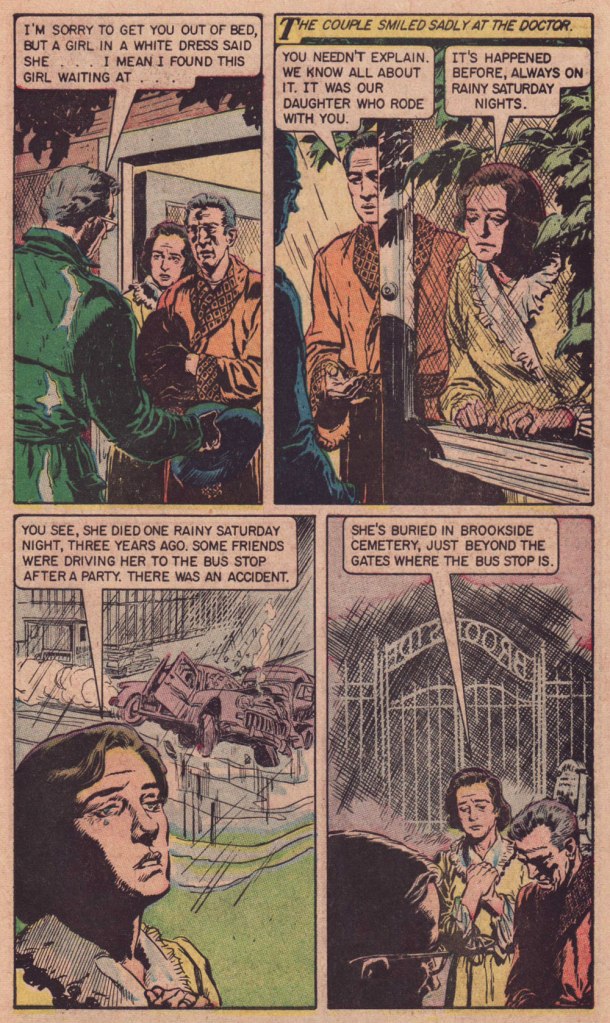« People that pick up hitchhikers I believe are basically good people that believe in other people and understand problems and don’t judge people. That’s always the kind of person I’m looking for. » — John Waters
Let’s take a nocturnal drive with George Evans (1920-2001) behind the wheel. Best known for his stellar contribution as a member of the elite EC Comics bullpen, Evans had earlier crafted some impressive comics for Fawcett (his own favourite period of his work) and Fiction House, and later, post-Code, for Gilberton, Dell and Gold Key, Warren and DC. He also worked extensively in newspaper strips, notably on Terry and the Pirates (under George Wunder) in the 1960s. He took over Secret Agent Corrigan from fellow EC alum Al Williamson, a nice long stint from 1980 to 1996, at which point the strip wrapped up and Evans (and Corrigan, presumably) retired.







While Evans’ chief forte was aerial warfare, this piece highlights his way with a mood, his quiet grace and flawless draftsmanship. This story is an excerpt from Gilberton’s The World Around Us series (36 issues, 1958-1961); this is no. 24 (August, 1960), The Illustrated Story of Ghosts, an oft-told tale (but never better) of the urban legend widely known as The Vanishing Hitchhiker (here entitled The Hitch-Hiker). Can’t you just feel that rain?
The renowned folklorist Jan Harold Brunvant wrote, in his epochal study, The Vanishing Hitchhiker: American Urban Legends and Their Meanings (1981, W. W. Norton):
« A prime example of the adaptability of older legends is ‘The Vanishing Hitchhiker’ — the classic automobile legend. This returning ghost tale was known by the turn of the century both in the United States and abroad. It acquired the newer automobile motif by the period of the Great Depression, and thereafter spawned a number of subtypes with greatly varied and oddly interlocking details, some of which themselves stemmed from earlier folk legends. »

-RG